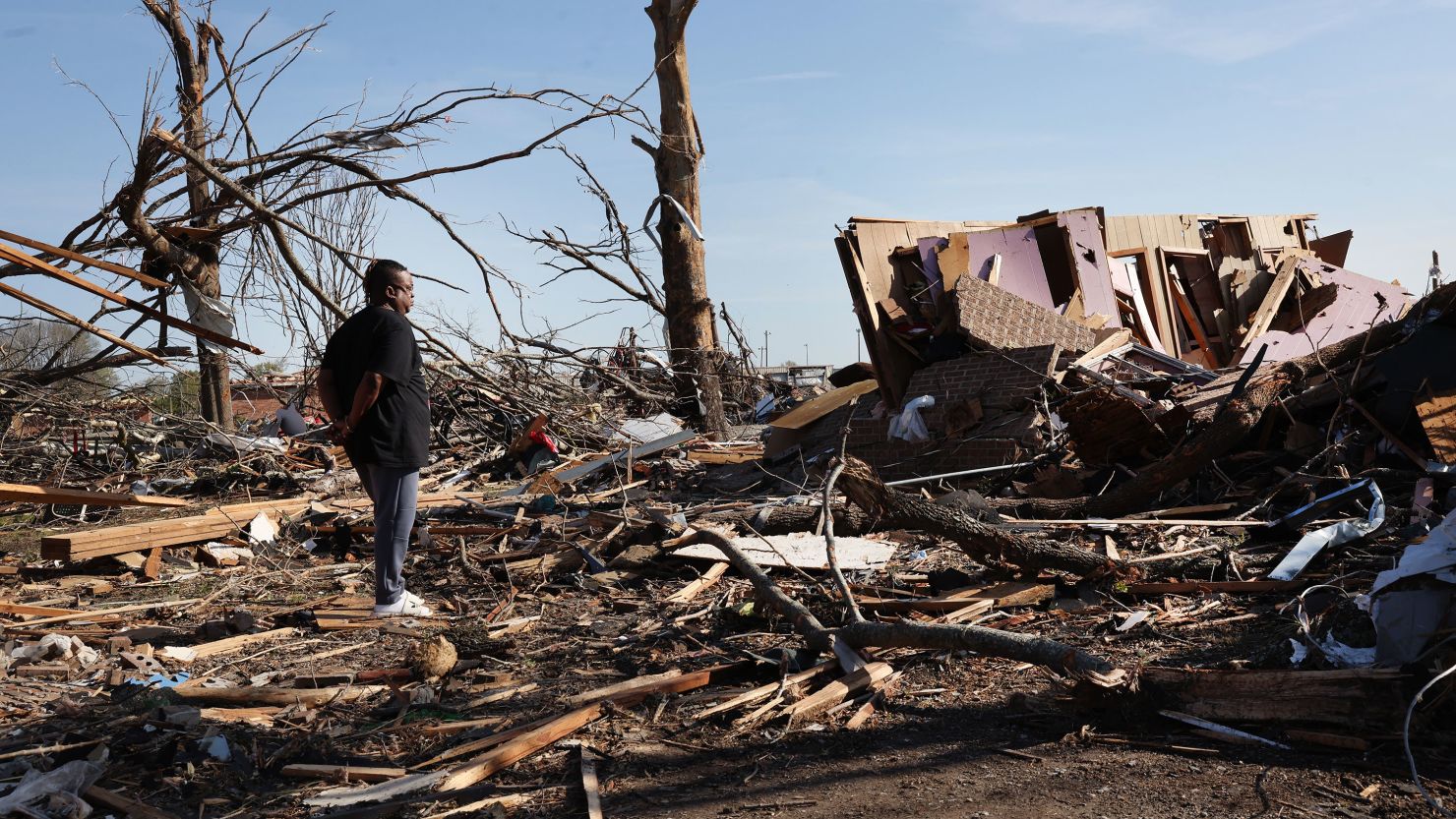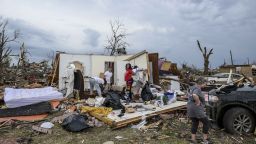Editor’s Note: A version of this article originally appeared in the weekly weather newsletter, the CNN Weather Brief, which is released every Monday. You can sign up here to receive them every week and during significant storms.
It has been an extremely active year in terms of severe weather, with well above normal numbers in terms of tornadoes, and the peak of severe weather season does not begin until this week.
The traditional peak for severe storms across the US is April, May, and June, this is also the time when the most tornadoes typically occur.
However, in 11 out of the last 13 weeks, severe weather has occurred somewhere in the Lower 48 and more severe storms are forecast later this week.
In January and February there were 178 confirmed tornadoes, the fourth most in recorded history, according to preliminary data from the Storm Prediction Center. March has remained very active and is likely to remain above normal in terms of tornadoes. Preliminary data show 296 tornado reports through March 26, which is the highest since 2017.
This week we spoke with Bill Bunting, the Chief of Forecast Operations at the Storm Prediction Center, about how intense the severe weather has been in recent months.
“There have been well over a dozen higher end severe events, that’s like enhanced risks, Level 3 of 5 or higher, just since November,” Bunting said. “It reminds me of some of the more historically active years that we’ve seen in the past.”
He told us the extremely active and wet pattern in the West is certainly related to the extremely active severe storm pattern the eastern US has been experiencing as far as large-scale atmospheric forces.
“Storm systems impacting the western US with anomalously high values of moisture resulting in lots of snow, lots of rain, tornadoes in Los Angeles, and as those systems progress east and they maintain their intensity, which too many of them have,” Bunting explained. “These very strong wind fields, very strong surface cyclones developing can contribute to heightened severe weather potential as those systems get farther east.”
While not every storm system pushing inland across the western US results in severe weather in the East, some of the strongest systems can and have. And some areas in the eastern US, such as the South, have been hit hard by severe weather event after severe weather event with very little break in between.
“For our part of the country, that we’re calling the Lower Mississippi Valley, it started back in the fall of 2022,” Michael Berry, a meteorologist at the National Weather Service office in Shreveport, Louisiana told us. “We had one of our biggest severe weather outbreaks that I can remember in quite some time November 4. We issued two tornado emergencies for four significant tornadoes that impacted high population areas in our area.”
The storm systems have been constant since.
“We’ve been so burdened with severe weather so far in February, March, we’re just kind of worried about what April will bring,” Berry said. “April is coming at us like a freight train. And of course, it always screams severe weather across this part of the country.”
Berry tells us April is their region’s normal peak to see severe weather.
“All the right ingredients come together in April to make April typically our worst month for severe weather,” Berry said. “You have more heating, which leads to more instability, and you always have the moisture here because of our proximity to the Gulf of Mexico.”
And unfortunately, sea surface temperatures across the Gulf of Mexico are currently above normal with some areas seeing temperatures as high as the upper 70s. But it is just one ingredient, and several are needed for a severe weather event to materialize.
If the weather pattern remains active, like it has been so far this year, there could still be several more weeks of severe weather ahead.
“It’s like making a cake, all the ingredients are there, the forcing aloft, the instability due to heating and the moisture source,” Berry said. “It’s the perfect ingredients for severe weather.”
For those living and working in the storm-fatigued South, Bunting had some words of advice:
The weather pattern has been relentless in recent weeks. There have been more than 160 tornado reports since Friday, March 24, when 26 people were killed in severe storms and the town of Rolling Fork, Mississippi was hit the hardest.
CNN Meteorologist Jennifer Gray contributed to this report.


